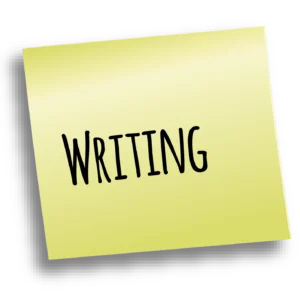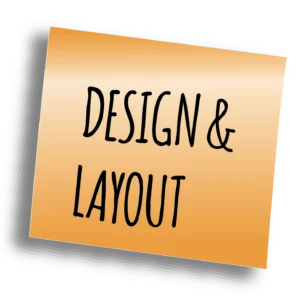BIG IDEAS LIBRARY PUBLISHING GUIDES
Fiction Books
Things to think about when self-publishing your novel, from writing to promotion, print and eBooks. These guides are for general guidance because every book is unique.


Writing Phase
Q: Who should I write for?
A: Clearly identify your target readers and who you are telling the story to before you begin the publishing process. Read stories in your genre, research the process, the story arc. Essentially do your homework. Understanding your audience will also help inform decisions about cover design, marketing, and distribution strategies.
Q: How can I improve my writing before publication?
A: Read extensively in your genre and beyond. Analyse how your favourite authors construct their narratives, develop characters, and build tension. This reading will inform your own storytelling techniques. If you are looking at crime fiction read the book Howdunnit, essays by many crime writers from the Detection Club. You will find lots of different courses and supporting material for creative writing, both online and in-person, that apply to all genres.
Q: How do I know if my novel’s ready for publication?
A: Write a first draft that you’re comfortable sharing with others, your first reader is very important but they also need to comment on everything without you taking offence. You can consider hiring a professional story evaluator or editor to ensure the story on paper truly reflects the story in your head. Work with your editor until you’re both happy the draft’s ready for production.
Q: What’s the most important advice for new fiction writers?
A: Read voraciously, then read some more. The best writers are also passionate readers who understand the craft from a reader’s perspective.

Design and Layout Phase
Q: When should I start thinking about cover design?
A: Start your cover design as early as possible—even before you’ve got the final manuscript. The cover’s the centrepiece of your marketing strategy and often determines whether readers will pick up your book. It will also be good to put on to your ISBN catalogue page as this image will be picked up by all the online stores when the publication date arrives.
Q: How important is professional typesetting?
A: Professional typesetting (the text font and layout of the inside of the book) is essential for good-looking print editions and highly recommended for preparing your ebook. Poor formatting can immediately signal amateur production to readers.
Q: What’s the biggest mistake fiction authors make in production?
A: Skipping professional proofreading. Nothing signals amateur or frustrates readers more than errors like misspelling and typos in a book, and too many mistakes will prevent them from reading your future work. Invest in a really good proofreader – it’s non-negotiable.
Q: How involved should I be in the proofing process?
A: You need to check proofs at every stage of the print process. Take in changes from your proofreader carefully and review all corrections before final approval.
Q: What files do I need for print production?
A: You’ll need print-ready PDFs created from your final, proofread manuscript. These should be high-resolution files suitable for professional printing. NB some printers will want to supply you with their own PDF settings file so your file is produced specifically for their machinery, if you need help with this, seek advice.

Return on Investment
Q: What’s the most important statistic for indie authors to know?
A: Independent authors who employ professional editors and cover designers improve their sales by an average of 34%. Professional cover design alone raises sales by an average of 18%.
Q: How do I decide whether to invest in professional services?
A: Calculate the cost of professional services against your cost per copy of printing and expected sales. The improved sales from professional editing and design often justify the investment. This comes down to your cost per copy of production and the percentage that the end sellers want to deduct from the sales price. Also consider how you are going to dispatch (to include delivery and packaging) your printed books. Some sellers will do this for you, but beware of their charges. You need to make sure each book brings you a % return for your work, production and postage costs.
Q: What should I prioritise if I’ve got a limited budget?
A: If you must choose, prioritise professional cover design first (18% sales increase) and professional editing second. Both together provide the maximum benefit (34% sales increase).
Q: Are there any corners I shouldn’t cut?
A: Never compromise on proofreading. Errors are frustrating to readers. Not only do they signal an amateur approach, they also destroy the immersive experience you’ve worked so hard to create.

Promotion Phase
Q: What do I do about marketing my book?
A: There are many book promotion businesses who will say they can make your book a bestseller. They will charge you and in many cases you will not see any sales uplift at all, be very cautious and sceptical of these offers, many now are AI driven and will massage your ego to get the sale of their service. Online activity alone is unlikely to bring you huge sales. Newsletters can be effective if you have following, have an audience. Events and talks help create buzz and sales. The time and effort to market your book should not be underestimated, and it’s not a question easily answered in an FAQ. Be aware that writing your book is just the start! Driving engagement to your online outlets is very much down to you, you can advertise on Amazon, Google, Facebook etc but remember each campaign must pay, all these expenses are coming off your book’s cover price.
Start your research into your audience and where they buy their books early on in the writing process. That’s where to focus your efforts, look at what other successful authors do to attract sales, including reviews and PR. Importantly, get trusted advice, and sound professional guidance to support all your efforts.
